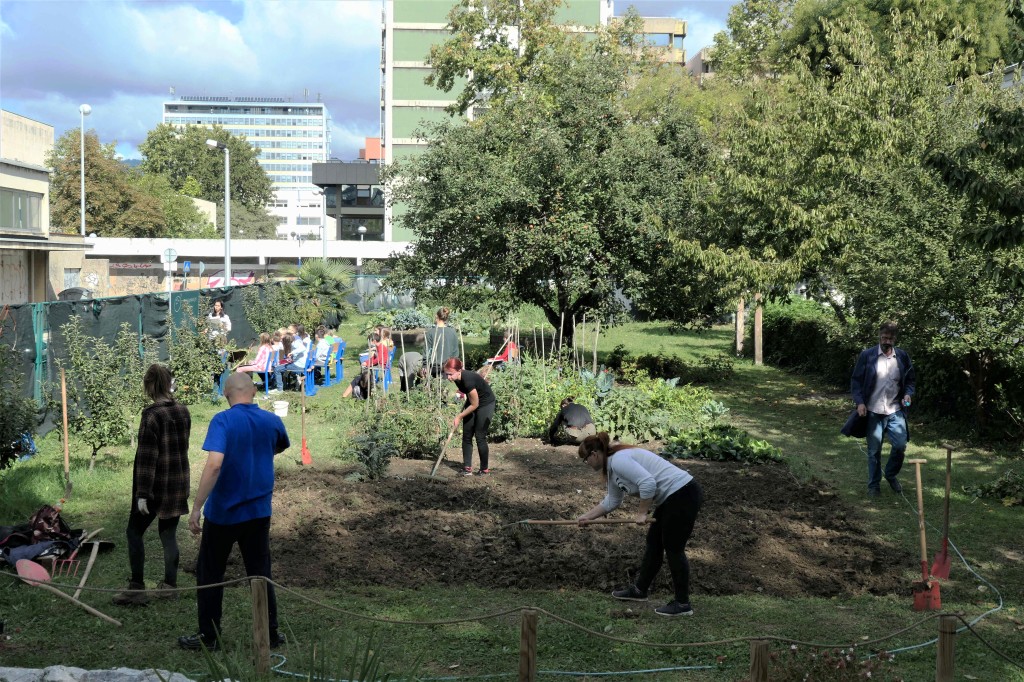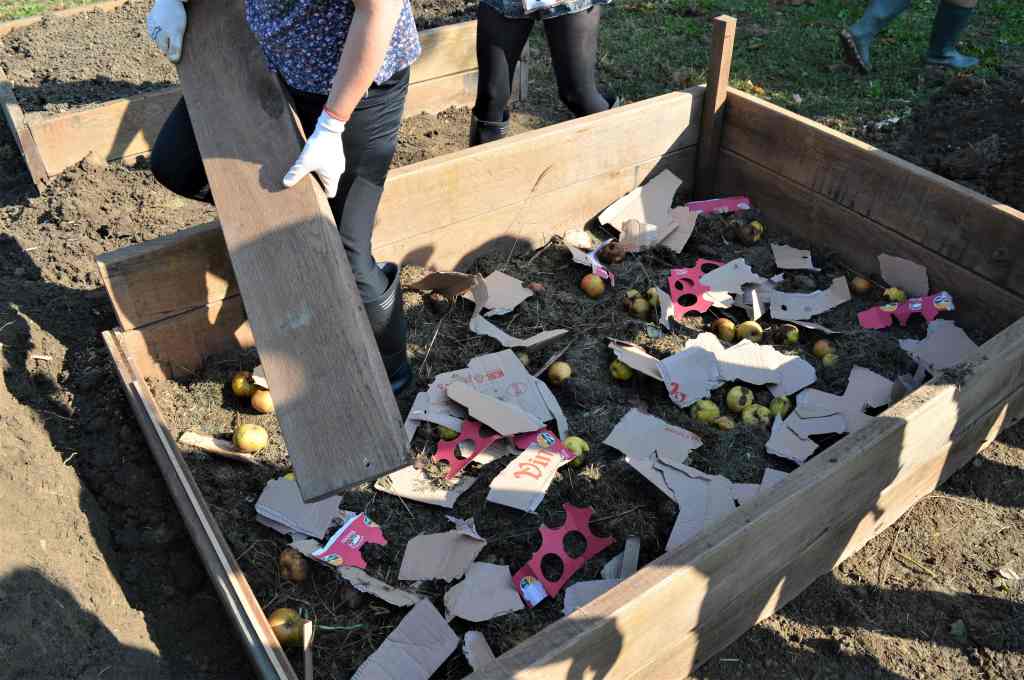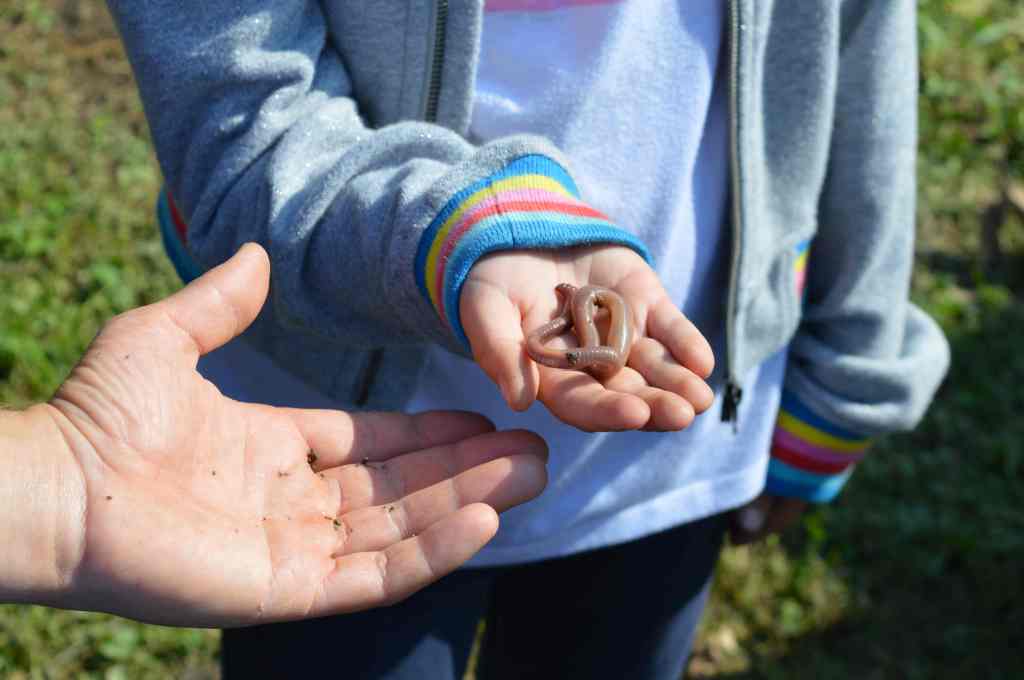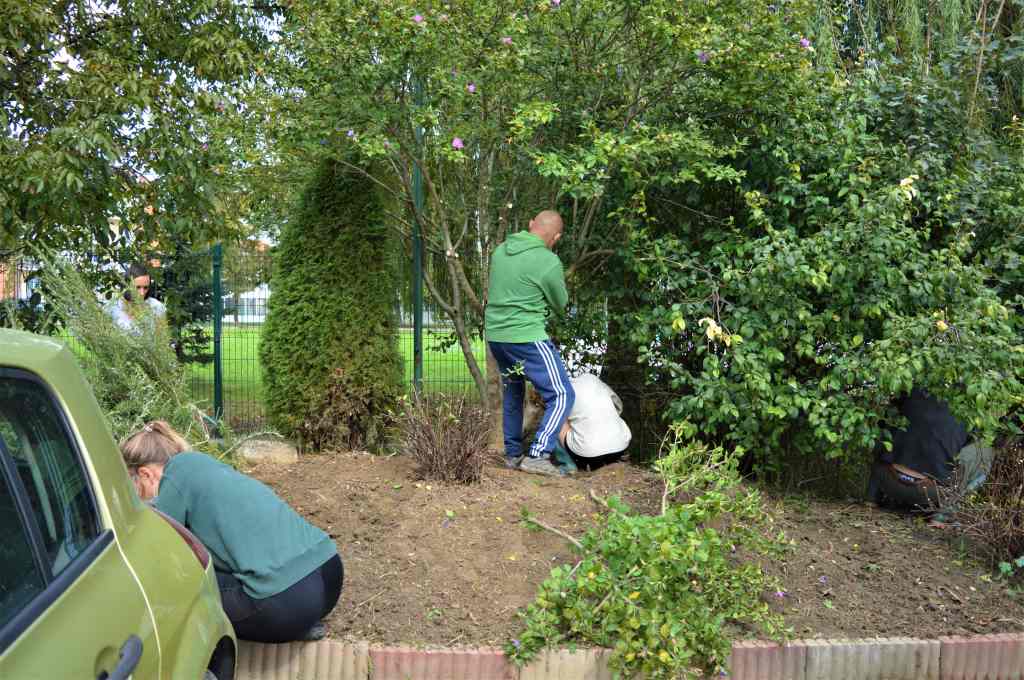School 1 : Primary school Čučerje
This school was the first school we worked with. We reached it after a one hour ride by van, and we discovered the cracks in the church’s bell tour due to the recent earthquake on March 22, 2020. With a magnitude of 5.3 on the Richter scale, the Čučerje primary school was badly damaged because it’s located near the epicenter of the quake.

What did we do in this place ? We, as a team of approximately 15 volunteers from two NGOs, rebuilt all the school garden in a few hours. We removed the trees, the bushes and the tangled branches on the rusty fence mesh. At the same time we dug 40cm deep holes in the ground using a shovel to plant apple and pear trees, and we didn’t forget to put in the holes some hydrated coconut tree mixture, to keep a wet soil and to protect the roots of the new trees. We also planted, following the same steps, some raspberries and blackberries plants, half a meter away from the fence poles, so that the branches could run on the fence mesh. Finally we unrolled a new fence to frame the garden because if we leave it opened then wild bores and deers would come and eat the young trees.


School 2 : Primary School Davorin Trstenjak
This school is located in the south of Zagreb city, and we spent 5 days there in total. We first had to prepare the ground in a rectangular area so that we could plant and grow vegetables. To prepare this space we used a shovel to turn the soil upside down, and we used rakes and hoes to break it into small pieces. We got rid of the roots in the mixed ground to avoid unwanted plants to grow.

Then, we built rising beds. The materials needed for one rising bed are the following : four 2 meters long + four 1,4 meters long treated oak planks, four wooden stick to put in the corners, a hammer, a drilling machine, sixteen 20cm screws and a ratchet wrench. When the rising beds were done, we filled them with wood pieces, organic wastes (rotten apples) and cardboard as a base layer. Then we filled the rising bed with the ground. The aim of the cardboard is to avoid the weeds to grow from the underneath. It is made of cellulose, therefore it also constitutes a good environment for bacteria and microorganisms. Those will decompose organic materials. In addition, the cardboard increases the temperature of 0,5°C, which is sometimes enough to protect the plants during winter.

Then we planted lettuce and garlic in the garden, and we learnt that the best period to plant garlic is autumn. It needs two years of growing before the plant grows out of the ground. Plus, garlic needs cold temperature (even a layer of snow doesn’t destroy it) in order to grow the best. To plant garlic, do one 4cm deep hole in the ground with your thumb and put one clove garlic inside and cover it with the ground.

Finally we removed the ivy from the trees of the school’s garden. We used our hands and axes. Don’t forget wearing gloves and long sleeves because ivy’s leaves may irritate your skin !

We had the chance in this school to work and play with the kids aged from 7 to 10 years old. A soccer with the children versus the volunteers. They helped us moving a mud hill on another place to leave some space to set up the rising beds, using wheel barrel, buckets and shovels. Our best souvenir in this school is the time spent with Mathias, an autist little boy who preferred working with us in the garden instead of playing with the other kids or studying. Although it was really hard to have discussions with him because he only spoke Croatian language, we created a very special link with him and tried to consider his desire to work. We took care of him and helped him using the tools. At every time we did or showed something to him, he said “Okay” and then tried by himself. In the end, he remembered our names, he learnt to say “Great Job” (which is quite similar to “dobro”, which means “super” in Croatian), and he answered our high five.

We also did workshops with the Davorin Trstenjak’s children :
- The Language Race, an orienteering race about learning different languages.
- The Nature Bingo, an home made bingo where we replaced the numbers by natural objetcs they had to find in the garden.

School 3 : Primary school August CESAREC
We visited this school twice. The first time was on a Saturday, and we were surprised to see how many motivated kids came to help us gardening, even though it was the week-end. Some parents were there too, and they translated our instructions or helped us framing the kids if needed. We have planted in this school’s beautiful garden apple trees while another team was working near the cars’ parking. Located near the main entrance of the school, we built there a stone garden. We removed the bushes, unwanted branches, and we removed a tree and re-planted him in a more adequate place.

The second time we went in this school, some of us went to finish the preparation of the stone garden area, and the others went in another school to pick 3 tons of rocks. After having put them on the back of a truck, we drove to Trg August Caesare primary school to unload the rocks and start the second part of the stone garden’s creation.
First we put the smallest rocks in the ground, at the base of the future small hill. The aim of this is to avoid the kids to take the small rocks and throw it away, and also to reinforce the hill so that it doesn’t pack too much. Another reason is that the rocks help draining the water.
As a second step, after having put all the ground on the tiny hill, we set the bigger rocks all around it and on it. We left some space between the rocks to plant succulents, which was the third and the last step. We have done a great job and the result is satisfying.


Vous devez être connecté pour poster un commentaire.